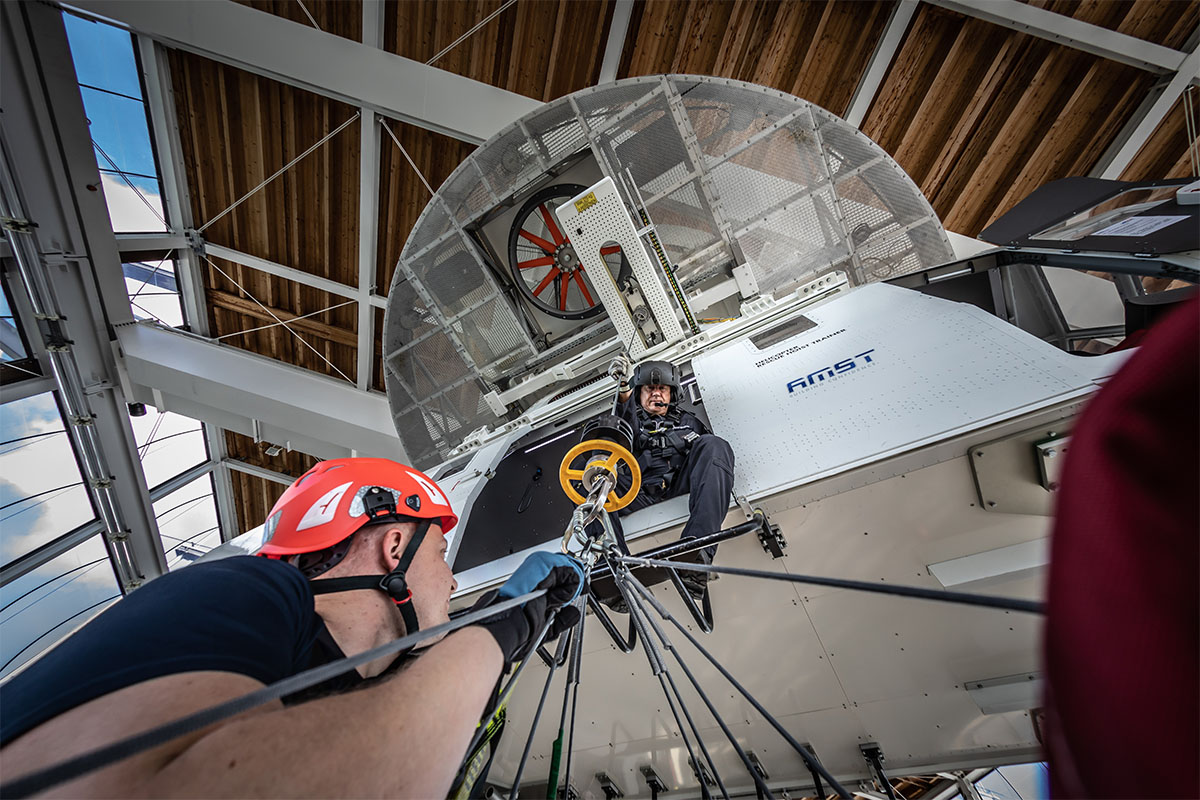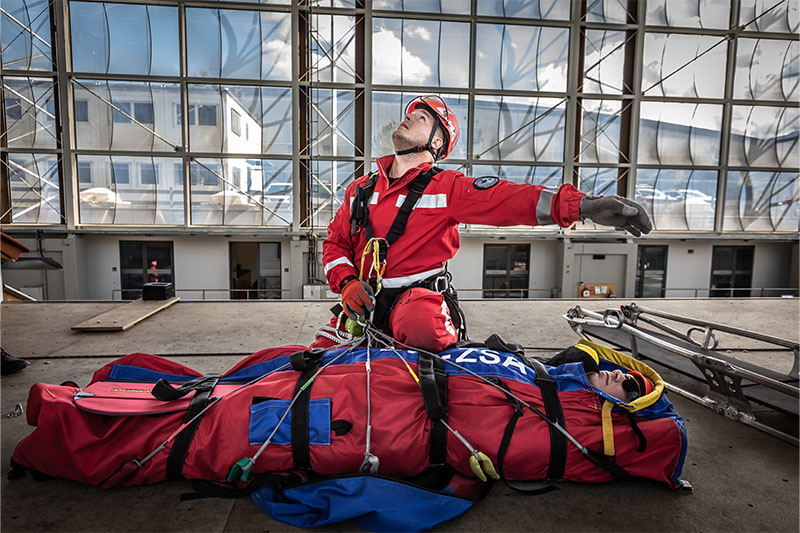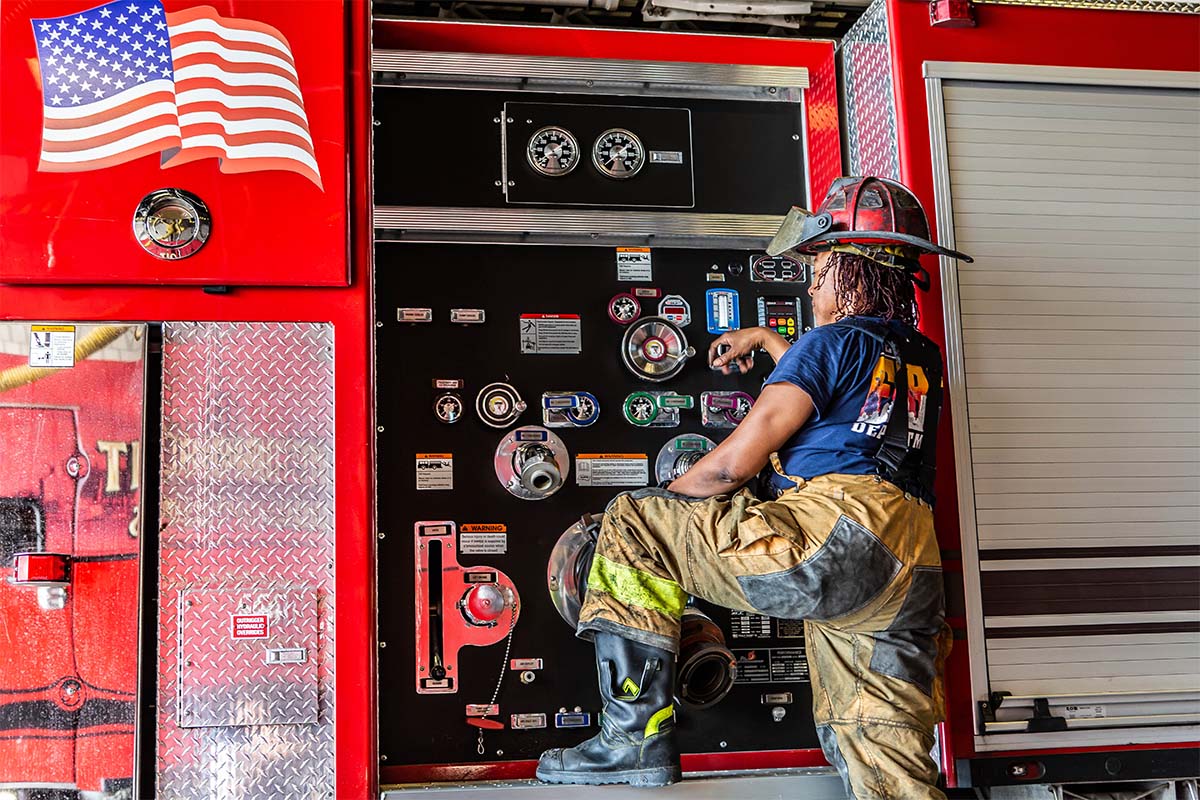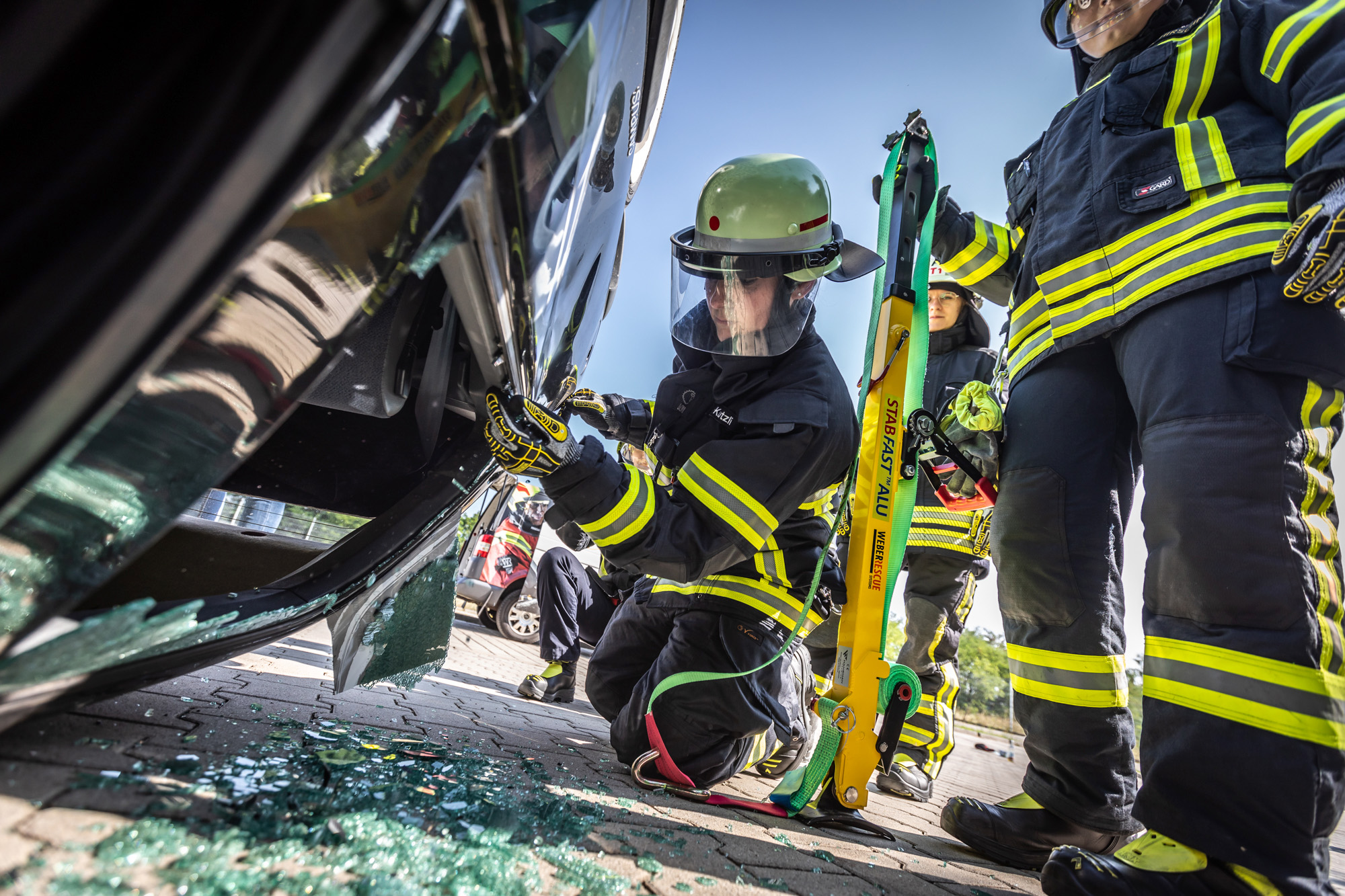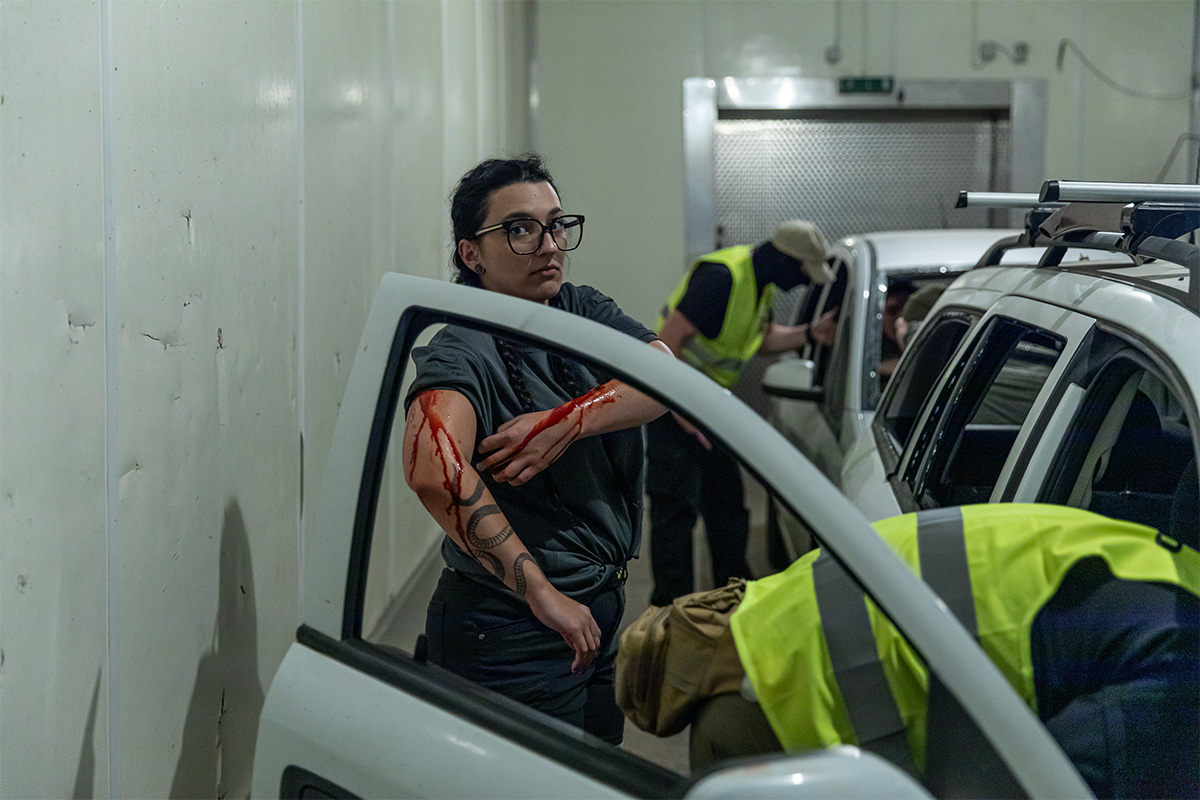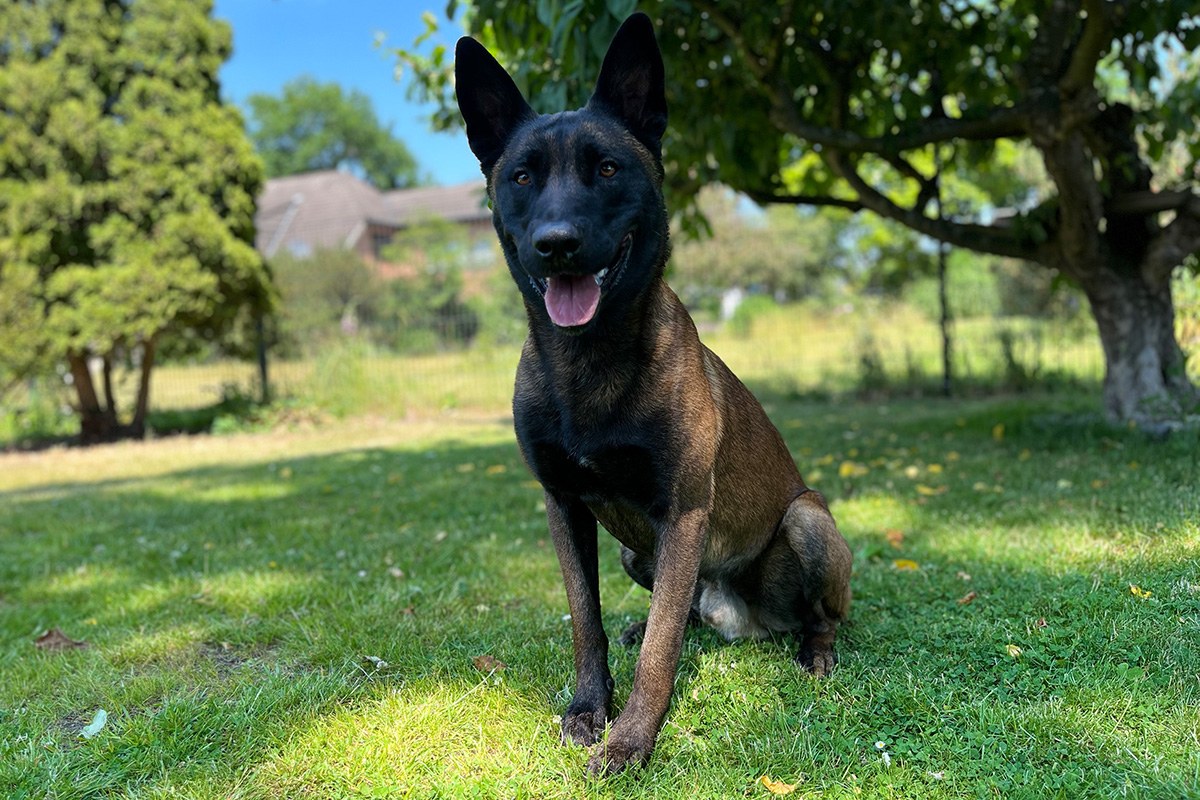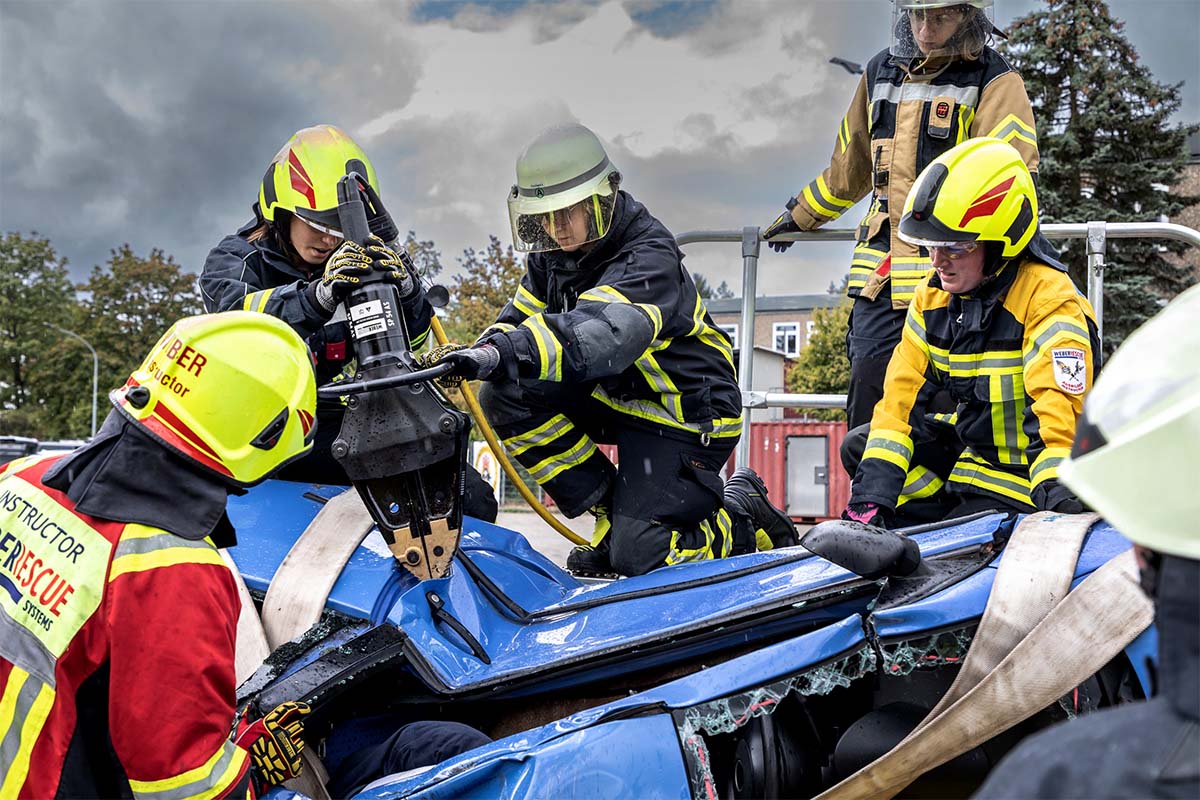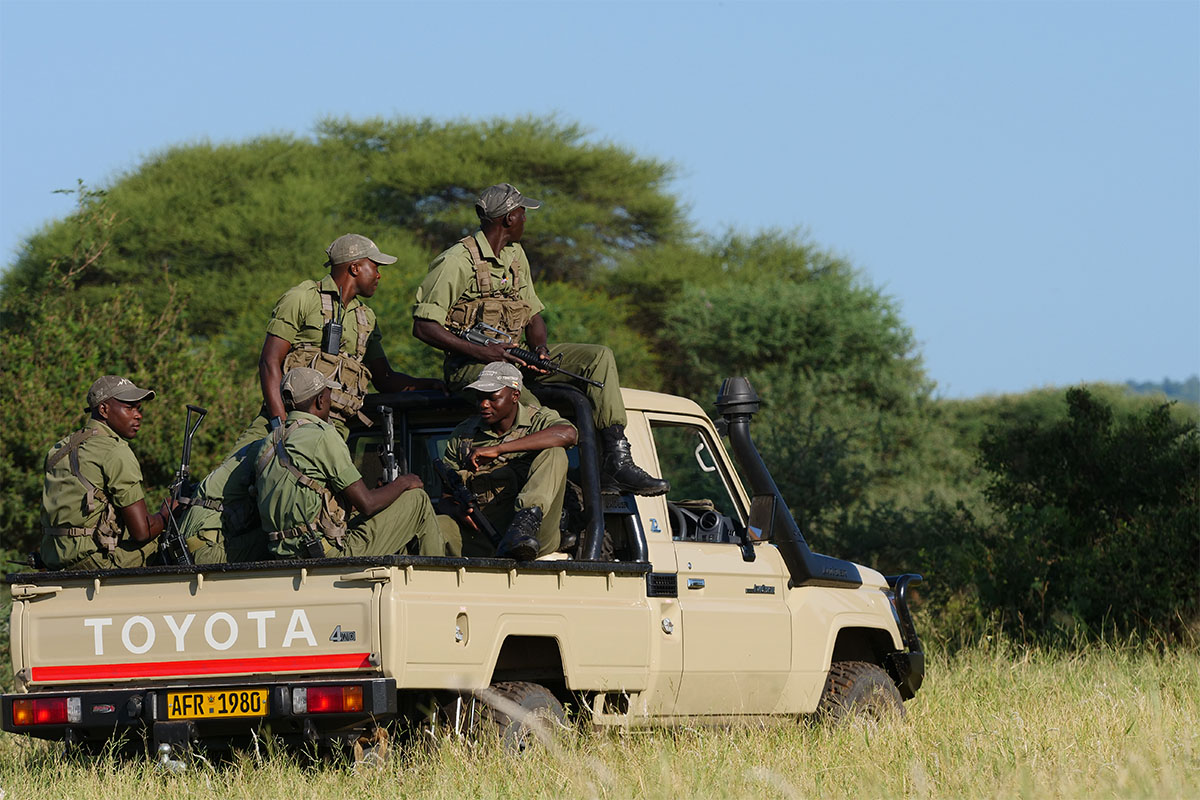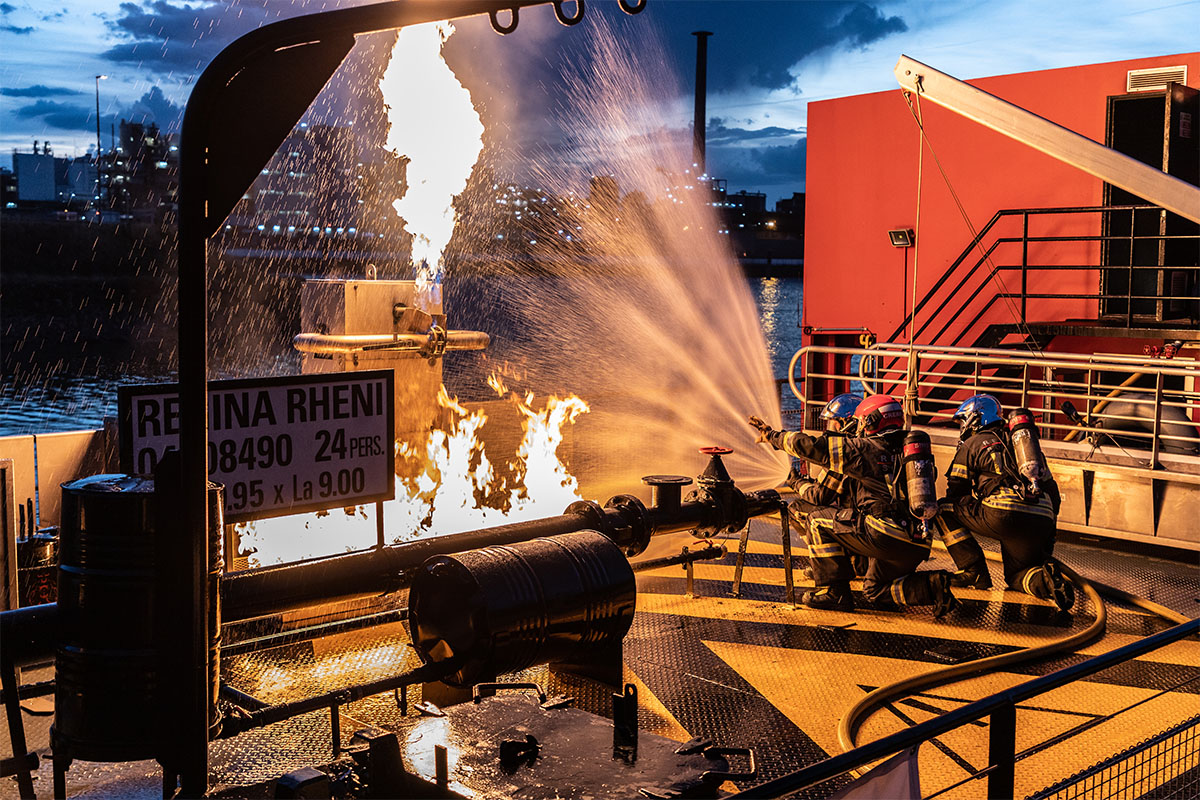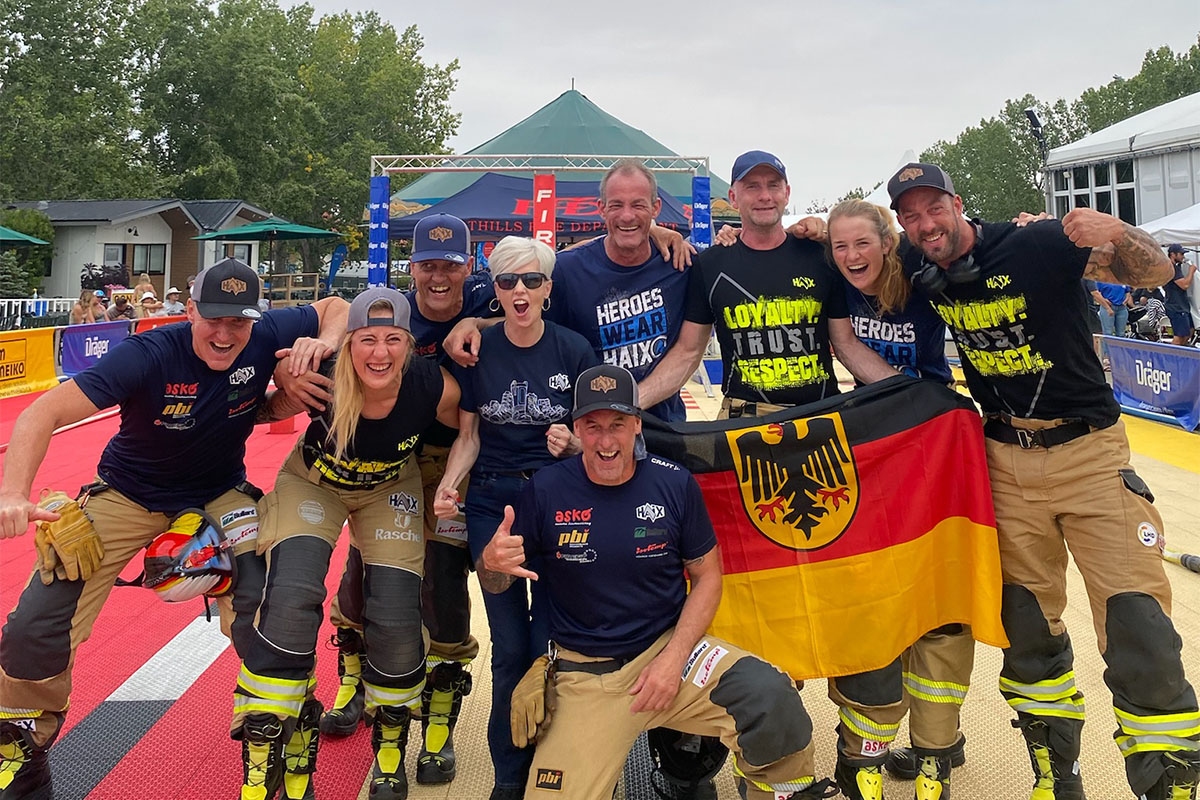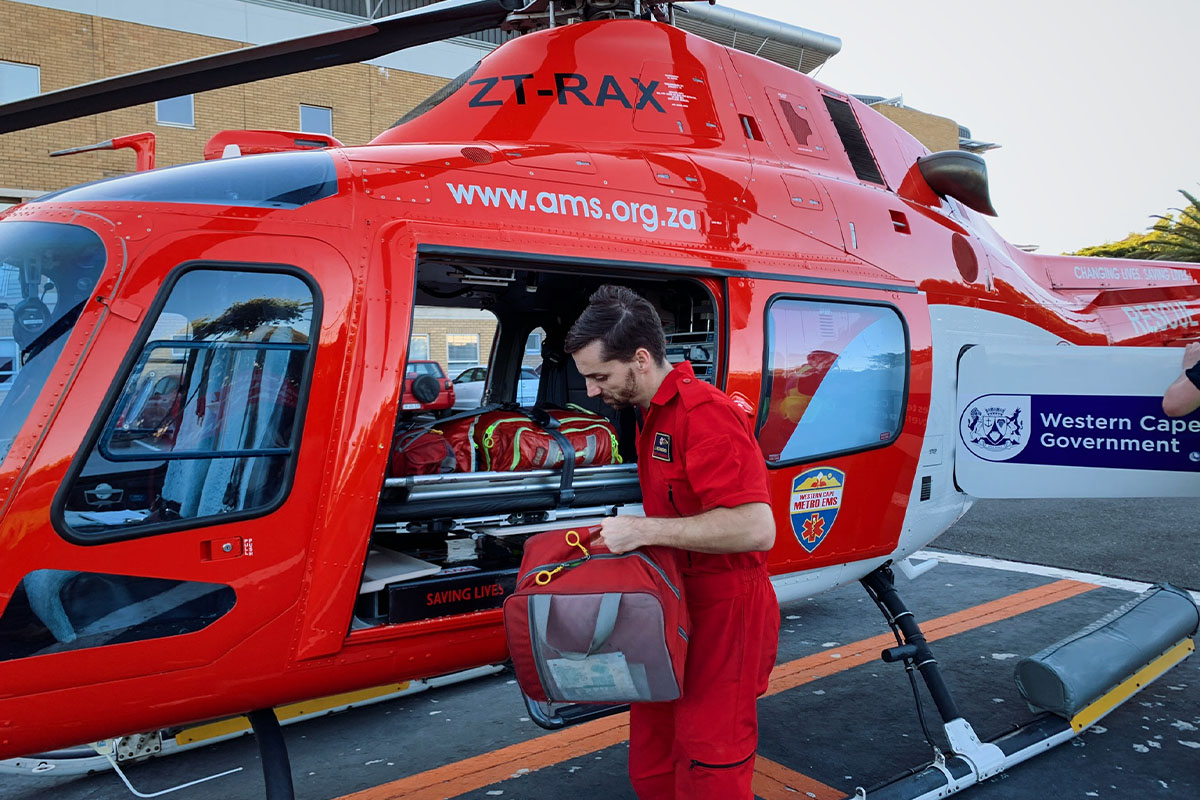An indoor mountain rescue hall – only in Bad Tölz. Many first responders train at the Bavarian Mountain Rescue Center for Safety and Training Among them, the professional fire brigade of Regensburg. They’re here for the helicopter simulator.
I am suspended in the air, ten meters off the ground. Below me, barren concrete. Above me, the cockpit of a helicopter. I whimper as I cling on to my rescuer’s back. Seconds later, his boots connect with the helicopter’s skids. I am hanging off of a firefighter and have no idea how to get into the cabin. “I’ll get you in,” he reassures me as he hooks my carabiner into the roof bolts inside the helicopter. I slide across the silver metal floor. Safety. My first air rescue! And all I had to do was trust the firefighter.
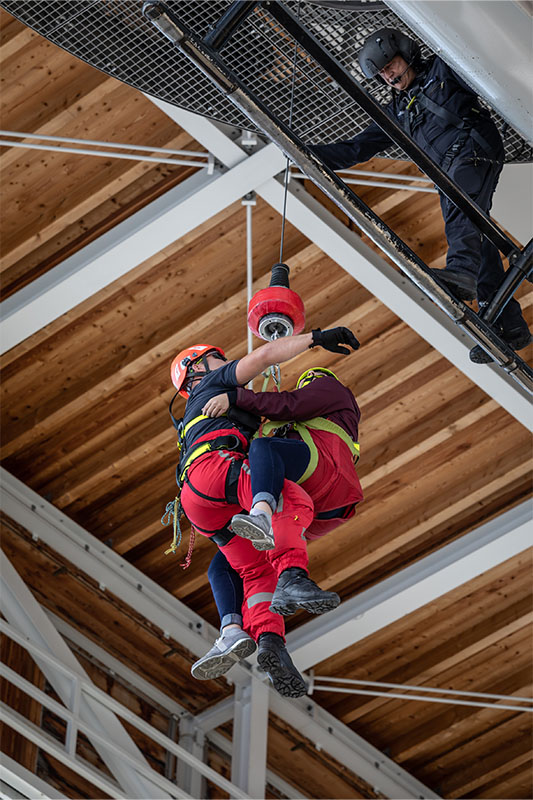
In the sacred halls
The Bavarian Mountain Rescue Center for Safety and Training in Bad Tölz is open to rescue professionals on roughly 300 days a year. While most of the people who train here come from Bavaria, there are also groups from other states, and even neighboring countries. The hall, initially used as a training facility for the Bavarian Mountain Rescue Service, was built in 2008. Since 2015, it has been open for specific emergency response organizations that regularly work with helicopters. It’s no surprise that so many teams are keen to train here: There’s no other facility like it in Europe. Cable car rescue, water rescue, climbing walls, tunnel systems and a room simulating harsh weather conditions in the mountains, with fog, wind and temperatures of 20 degrees sub zero – many of these training opportunities are unique. Why no similar centers exist is a mystery considering the sheer number of missions facing the Bavarian Mountain Rescue.
In the summer of 2021 alone, its teams responded to more than a thousand distress calls in their rescue helicopters. Tobias Vogl, head of the service and a mountain rescue professional himself, gives me a tour of the training center. It is 60 meters long, 25 meters wide and 17 meters tall. Daylight floods into the room through three large floor-to-ceiling window facades. Suspended from the ceiling, there are two helicopter cabins attached to crane runways, three gondolas and two ski lifts. A house, complete with a balcony and skylights, stands in the middle of the hall. “We used this in response to the floods during the past few years,” Vogl explains. Helping people who are stuck on their roof: This is the scenario that the height rescue group from Regensburg fire department is practicing today.
Flying together
Nine firefighters surround a large, white box. The AMST flight simulator is much larger than the model from the first scenario. It can represent a range of helicopter types and, in particular, resembles a model used by the German Federal police. Before they take to the skies, the hoist operator gives the firefighters instructions. He is also in control of the steel cable, communicates with the emergency services, and tells the pilot where to fly. The simulator takes off, and two firefighters hook themselves and their wrapped-up rescue back into the hoist so the hoist operator can pull them up. On the crane runway beams, the cabin slides through the hall, towards the roof of the house. The hoist operator lowers the firefighters down; with hand signals, they tell him that they have safely landed. Both crawl through the skylight. The group runs through this scenario several times, always in different teams.
Although the team is preparing for real emergencies, they have plenty of fun on the exercise, occasionally wrapping the rescue bags around each other a little tighter than is strictly necessary. The professional firefighters from the Regensburg brigade are experienced, with quite a few real-life missions under their belt. Group leader Stefan Stauber informs us that they are called to around 50 height rescue operations every year. “Why would you do this job?” I ask and am met with hearty laughter. “It’s a huge challenge, the feeling of trust and camaraderie are unparalleled, and it’s really fun to find solutions together.”
Saving lives together
The training session is complete. The firefighters listen to the hoist operator’s closing words and applaud. Their muscle memory has put a lot of work in today: All the procedures and movements must be internalized so thoroughly that they can be applied without thinking on duty in a real-life rescue situation. “These uniform standards are a life insurance policy for rescue professionals and helicopter operators,” explains Tobias Vogl. And that’s why this large hall is based on a strong sense of camaraderie. No matter the color of the helicopter, no matter if it’s the mountain rescue or the fire brigade in the hoist: They all train and save lives together here.
